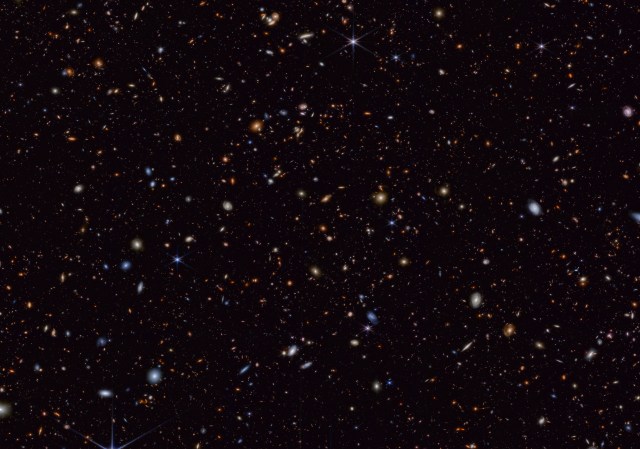On Earth, red rocks — sometimes called “red beds” — generally get their color from oxidized iron (Fe3+), which is the same form of iron that makes our blood red, or the rusty red color of metal left outside. Green spots like those observed in the Wallace Butte abrasion are common in ancient “red beds” on Earth and form when liquid water percolates through the sediment before it hardens to rock, kicking off a chemical reaction that transforms oxidized iron to its reduced (Fe2+) form, resulting in a greenish hue. On Earth, microbes are sometimes involved in this iron reduction reaction. However, green spots can also result from decaying organic matter that creates localized reducing conditions. Interactions between sulfur and iron can also create iron-reducing conditions without the involvement of microbial life.
Related Posts

NASA’s Webb Opens New Window on Supernova Science
The JADES Deep Field uses observations taken by NASA’s James Webb Space Telescope (JWST) as part of the JADES (JWST…

NASA TechRise Student Challenge
Are you ready for this year’s NASA TechRise Student challenge? From researching Earth’s environment to designing experiments for space exploration,…

10 Years Ago: The First Operational Cygnus Cargo Mission to the Space Station
To replace the cargo and crew transportation services to and from the International Space Station following the retirement of the…
